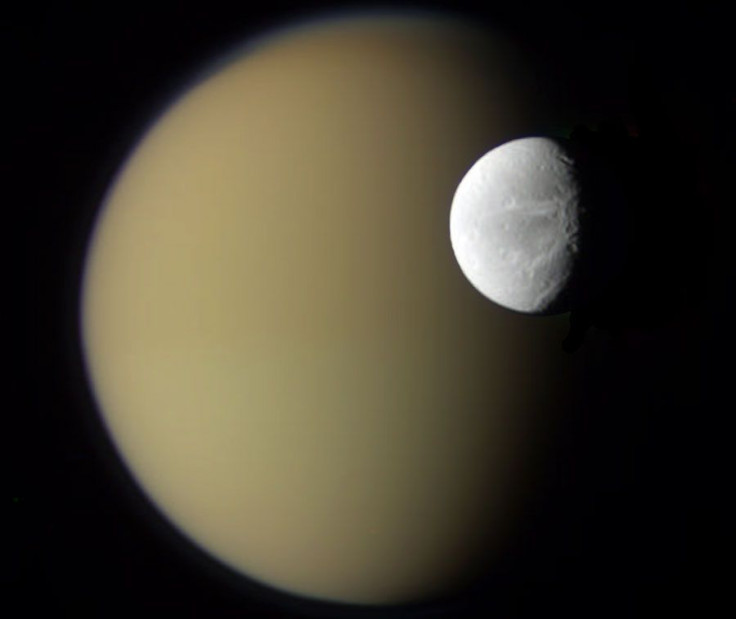Saturn’s Moon Titan Fails Key Test For Finding Alien Life

KEY POINTS
- Titan is the moon with the highest chance of supporting life
- Researchers tested if microbial life could thrive on Titan
- Titan most likely does not have alien life according to quantum mechanics
According to a new study, the chances of alien life existing on Saturn’s Earth-like moon Titan is very unlikely due to a certain important factor. The authors of the study came to this conclusion after carrying out a critical test based on quantum mechanics.
Out of all the moons in the Solar System, Titan is believed to be the most likely to host extraterrestrial life due to its similarities with Earth. This notion is one of the driving forces behind future space missions such as NASA’s Dragonfly expedition, which is expected to launch sometime in 2030.
Many scientists believe that Titan could host life due to its environmental conditions. It is the only moon in the Solar System to have a dense atmosphere, which increases its chances of having pools of liquid water. According to previous scientific studies, the pools on Titan are filled with frigid lakes of hydrocarbons.
Although these pools might be extremely toxic, scientists believe they could still support microbial life due to the presence of nitrogen-based molecules known as azotosomes. Theoretically, these molecules could arrange themselves to form bubble-like membranes around the cells of a living organism. This idea is based on how lipid molecules function on Earth.
Unfortunately, according to a new study published in Science Advances, it would be impossible for azotosomes to form protective bubbles around living cells. Using quantum mechanics, the authors of the study tested the thermodynamic viability of the molecular structures formed by azotosomes.
According to the researchers, the molecules of chemicals are known to arrange themselves in the simplest pattern with the lowest energy. However, due to the atmospheric conditions on Titan and other environmental factors, the researchers learned that the structures of azotosomes are not the simplest patterns that nitrogen-based molecules can form.
In other words, the results of the test revealed that the development of azotosomes is not thermodynamically viable on Titan.
“Quantum mechanical calculations predict that azotosomes are not viable candidates for self-assembly akin to lipid bilayers in liquid water,” the researcher wrote in the abstract of their study. “We argue that cell membranes may be unnecessary for hypothetical astrobiology under stringent anhydrous and low-temperature conditions akin to those of Titan.”
© Copyright IBTimes 2025. All rights reserved.





















